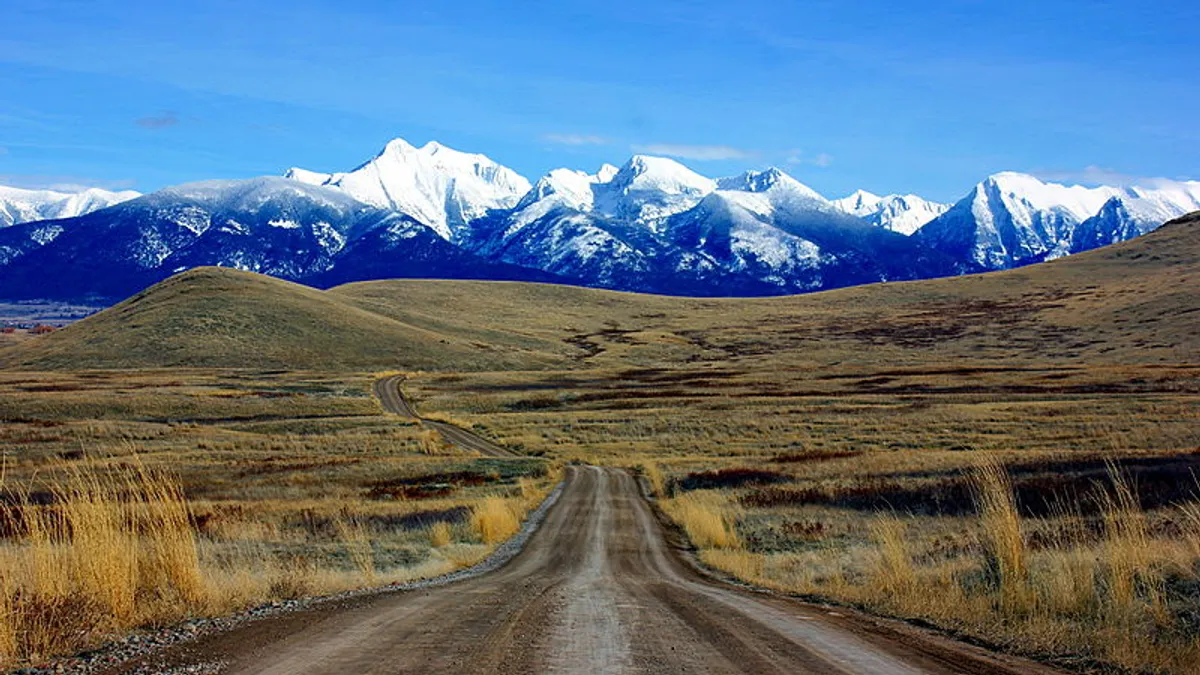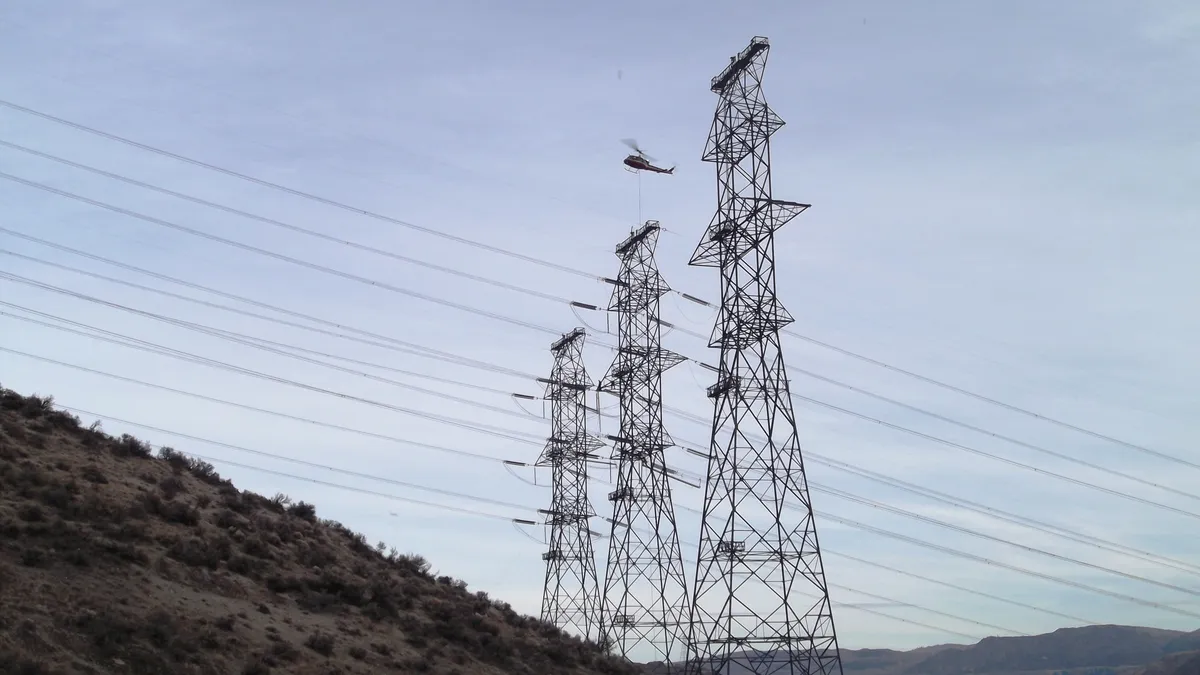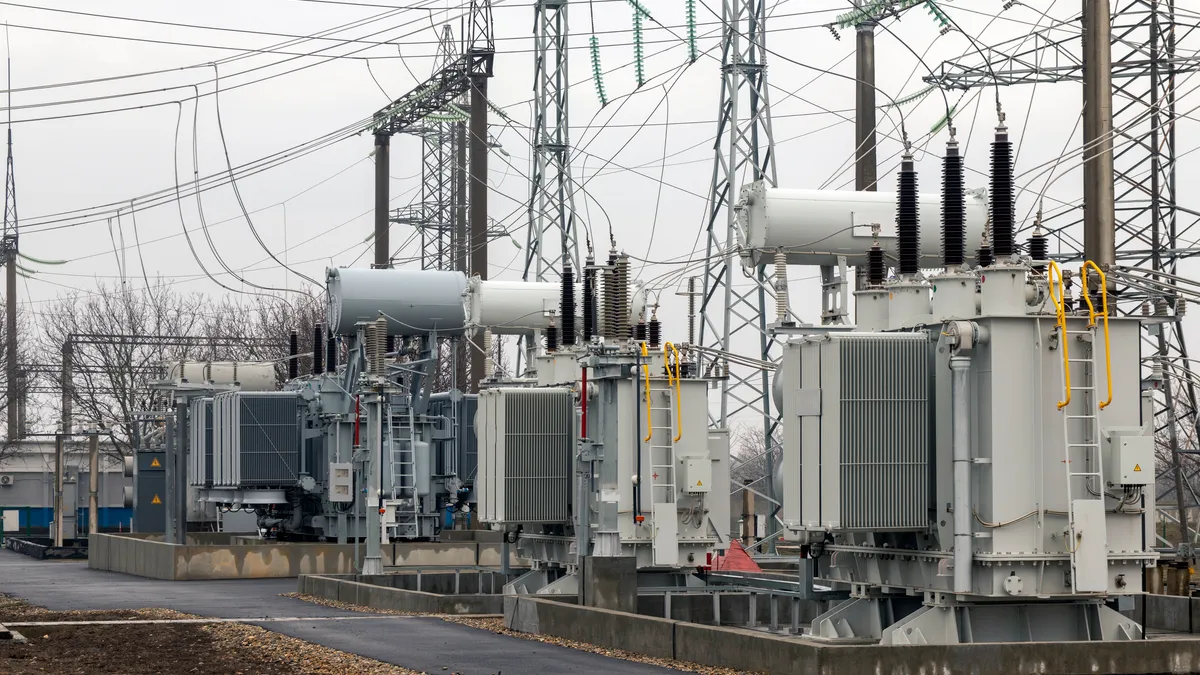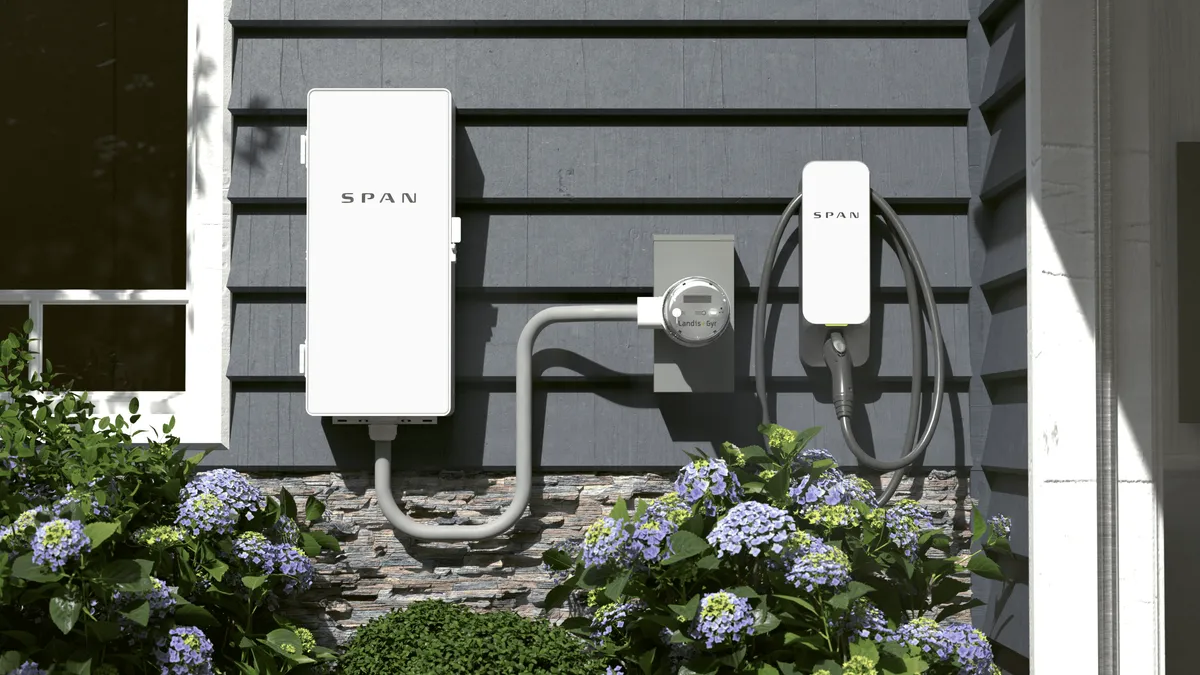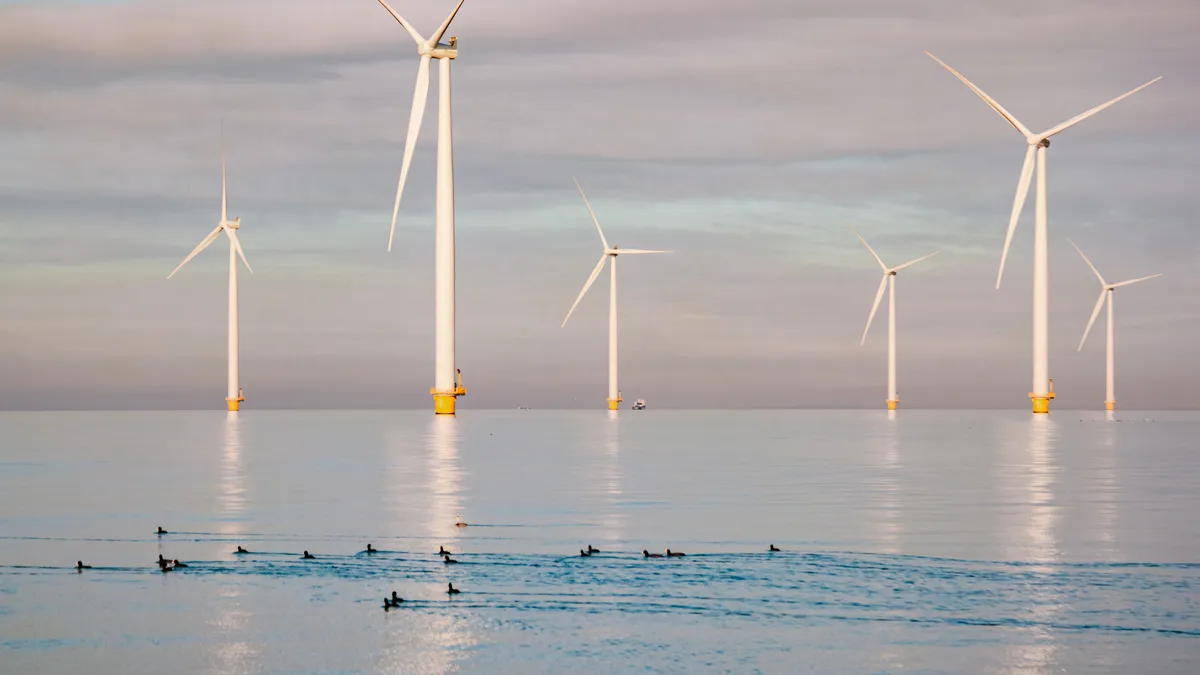After more than a year of contentious discussions between legislators, utility leaders and the solar industry, Montana’s net metering debate is just about back where it began, according to the state’s head regulator.
“Net metering was a very hot topic in our last legislative session and both sides were passionate,” Laura Rennick, head of the Montana Energy Office, told Utility Dive.
But despite much debate, “lawmakers never seemed to coalesce around or even propose any big, meaningful reforms,” said Travis Kavulla, vice-chair of the Montana Public Service Commission.
Following the failure of net metering reforms in recent years, Montana lawmakers formed a special legislative committee — Energy and Technology Interim Committee (ETIC) — to address how to encourage distributed solar growth without putting stress on the utility system or shifting costs to the rest of the customer base.
Legislators on the ETIC say their work has been productive, resulting in five bills on solar energy that will be considered in the next session. But Kavulla and others said those measures avoid the central issue of net metering rates, setting up a dilemma for those who hope to avoid a contested regulatory proceeding similar to those seen in Arizona or Nevada.
“We were ready to act, but deferred to the committee,” Kavulla said. “At this point we are pretty much back where we started.”
Hope for any collaboration between Northwestern Energy, the state’s dominant utility, and renewable energy advocates appears to rest in a set of parallel policy discussions convened by utility CEO Bob Rowe. At first, participants say the discussions yielded only mistrust, but recent talks have led to new distributed generation (DG) pilot project programs and a new awareness that the state’s lack of data on net metering must be addressed.
Northwestern’s workshops “skirted the politics of net metering,” but helped start conversations, Montana Renewable Energy Association (MREA) Executive Director Diana Maneta told Utility Dive. They “played a role in building a better working relationship between MREA and NWE.”
A history of acrimony
As in other other states, the Northwestern’s concern with net metering has been a perceived cost shift from solar to non-solar customers, Rennick said. Renewables advocates argue there are benefits to distributed generation that utilities and regulators fail to recognize.
“Their inability to meet in the middle is not unique to Montana,” she said.
In the last legislative session, bills that would have strengthened the NEM policy were blocked by Northwestern opposition and a utility-supported effort to undermine the policy was blocked by solar advocates, according to Maneta.
“Only the bill that directed the ETIC to do a net metering study passed,” she said.
The debate “blew up” and left mistrust on both sides, according to Eric Sell, communications director for the MPSC. Some advocates suggested the utility is “anti-distributed generation” and NWE lobbyist John Fitzpatrick referred to DG as a “melanoma,” according to the Helena Independent Record.
Despite that comment, Northwestern does not want to eliminate net metering, CEO Bob Rowe told Utility Dive. “But basic questions should be addressed if the program is expanded.”
Customers without distributed generation “should pay an appropriate price for the solar energy delivered to the grid, but they should not pay more,” Rowe said. Net metered DG owners, meanwhile, “should in some way pay for grid services from our multi-billion-dollar infrastructure.”
NWE executives have publicly acknowledged that any cost shift imposed by net metered customers has little price impact on the rest of the rate base, at least for now.
Of the 359,000 NWE Montana customers, “about 1,500” were net metered in 2015, according to the draft ETIC final report. But that was up from 370 in 2008.
As the number of net metered customers grows, “questions about the 1999 policy will continue to be raised,” the ETIC reports. That was the year Montana’s current solar incentive was enacted.
A dearth of data
In forming the ETIC, legislative leaders asked the utility and MREA to work together, but thy submitted widely divergent cost-benefit analyses of net metering in Montana. The ETIC asked the MPSC staff, the Department of Environmental Quality (DEQ), and the Legislative Office of Consumer Counsel (OCC) to review the analyses.
All of them “basically agreed” in their findings, said Brian Fadie, program director at the Montana Environmental Information Center (MEIC).
“The utilities have not comprehensively evaluated the system impacts of distributed generation sources, nor have they produced sufficient data for such an evaluation,” the PSC staff reported.
Analysis could not, therefore, “reliably quantify the benefits and costs of net metering.”
Additionally, neither analysis fully assessed “alternative methods for analyzing the reasonableness of current net metering policies,” staff continued. Each of the stakeholders’ estimates “are incomplete and, in some cases, reflect questionable assumptions.”
Both DEQ and OCC endorsed the PSC Staff critique.
“When focused strictly on the potential cost shifts among ratepayers,” DEQ added, “significantly more and specific data is needed.”
The only way to evaluate any “cost shift” created by DG would be through a data-based valuation of the electricity generated by a DG system, DEQ authors wrote. The NWE and MREA analyses did not provide that data, and “using the annual average wholesale price of power is not a suitable analog.”
“Much of the information requested by ETIC and not provided by respondents is simply not available at the present time, and will be costly and time-consuming to obtain,” the OCC observed in its letter.
The commission is “fully supportive” of growing DG in Montana but not of “forcing costs unnecessarily onto ratepayers who don’t own distributed generation,” MPSC Communications Director Eric Sell observed of the outcome. “What is missing in the discussion is solid data.”
The ETIC’s fruits
Despite the dearth of usable data, the ETIC process was still a step forward, said state Sen. Cliff Larsen (D), the committee vice chair.
“It produced five proposed bills that will be considered in the 2017 session,” he said.
The ETIC worked to find a reasonable net metering compromise, Larsen said, but unresolved disputes in the parallel policy discussions between NWE and renewable advocates left legislators with no choice but “to divide the baby” in their proposed bills.
A joint letter to ETIC lawmakers, MREA and Northwestern set forth their recommendations for the committee. They agreed the PSC commission should evaluate alternative metering technologies and regularly review interconnection standards, along with a slate of other reforms.
The letter left debate open, however, on whether to create a separate customer class for solar owners, the timing of any solar cost/benefit analysis and the specifics of any grandfathering provision, should net metering rates change.
The letter led to the EITC’s five proposed bills. LC NET1, LC NET2, and LC NET3 follow general agreements in the joint letter and are not expected to be controversial.
LC NET4 would enact the letter’s grandfathering provision, ensuring solar customers can keep their existing net metering credits for the life of their systems. The 8-0 passage of grandfathering in the ETIC was important, but “it was an even bigger deal that Northwestern publicly said they strongly support it,” MEIC’s Fadie said. “It means we won’t see the acrimony that was so costly in so many ways in Nevada.”
LC NET5 is expected to be the most controversial. It would increase the current 50 kW cap on net metered arrays to 250 kW, but only for government buildings.
LC5 will be a priority for the MREA because “we want to see the cap increased to 250 kW for all customers,” Maneta said. “Commercial businesses could benefit just as much from a system that size.”
NWE did not support expanding the cap, she added. “I won’t be surprised if they oppose it at the legislature.”
The first four proposed bills represent policy progress, said Orion Thornton, co-owner of local solar company Onsite Energy and vice president of MREA.
But, he added, “if the enlarged cap does not pass, it would not be progress that gets us out on more roofs and installing more solar.”
The most crucial provision of all, in LC4, was dropped at the last ETIC meeting, Fadie said. It would have required the commission to initiate an NEM cost-benefit analysis when generation from net metered systems reaches 1% of Montana retail electricity sales.
The current 20% to 30% annual increase in such sales means Montana will likely reach that 1% between 2023 and 2027, according to the ETIC final report.
The MREA supported LC4’s cost-benefit analysis trigger. “The cost of a full analysis at today’s 0.1% penetration would probably exceed any cost shift there might be,” Maneta said. “At 1% of retail sales, it would be time to stop and do some analysis.”
State Rep. Keith Regier (R), chair of the ETIC, expects continued “passion” until legislative decisions resolve the issues. But lawmakers need commission guidance, he insisted. “The PSC should evaluate other states’ cost-benefit studies and make recommendations to the legislature because they have the expertise to deal with this.”
“The ETIC process has given the stakeholders a much better understanding of how complex this is and that there is not an easy fix,” the Energy Office’s Andersen said. Though there is no comprehensive agreement, there was progress toward a common understanding — one that may have been impossible without the parallel workshops led by Northwestern.
Northwestern's solar workshops
Amid the political turmoil, NWE CEO Rowe decided to take the initiative.
The Community Sustainable Energy Workshops he convened were not to deal with net metering specifically, but to engage “a diverse group with differing or even critical views to help design a series of pilot projects,” he told Utility Dive.
The participants included renewables vendors, including Thornton, representatives of advocacy groups, including the MEIC and the MREA, the public sector, including DEQ, the Energy Office, and the OCC, and many others.
“Everyone accepted the ground rules and we learned a lot from each other,” Rowe said. “It was a great step toward getting from where we were then to where most people would like to be.”
Led by John Sterling, director of research at the Smart Electric Power Alliance (SEPA), the six workshops began with introductory exercises and led to the design of the pilots.
As the group worked on the pilot designs, “it turned into an opportunity for the renewables advocates to learn more about utility concerns and for the utility to learn what renewables advocates have to offer,” the Andersen said.
When the utility approached SEPA about leading the workshops, Sterling immediately stipulated that a good process would take more than a one-day meeting. Rowe agreed.
Sterling then led monthly sessions from November 2015 to April 2016, alongside the ETIC process. The workshops focused on education and collaboration and culminated with two stakeholder-designed $1 million pilot proposals.
To begin, “we helped them identify four guiding principles that the pilots would meet,” Sterling said.
The first principle was that the pilots had to change how customers and the utility interact and be replicable.
Second, the pilots had to produce measurable impacts on a defined timeline. Third, they had to be self-sustaining as well as environmentally, economically, and socially beneficial.
Finally, they had to be fair to both participating and nonparticipating customers.
The educational sessions covered a range of topics from the national solar market to technical grid optimization.
Rowe and top NWE executives attended every session. “The cross-collaboration and discussion led to much better communication than they would have had in the tense environment of a rate case,” Sterling said.
Before the last meeting, Sterling and SEPA condensed and summarized the stakeholders’ ideas into seven pilot concepts and the stakeholders voted on them.
“NWE did not vote, so the two $1 million pilots were chosen completely by the stakeholders,” Sterling noted.
The top-ranked pilot will test the utility’s integration of high penetrations of distributed solar, with smart inverters, battery storage, and advanced metering. The other involves solar for schools.
“Northwestern is now working on how to make the pilots work and what to file with the commission,” Sterling said. “It has committed $2 million. Whether they will be rate based is up to the utility.”
NWE does not see the pilots as “supply resources” but could ask regulators to approve rate basing of “some of the cost of developing and maintaining them,” Rowe said.
The workshops “were a positive contribution,” the OCC’s Brown said. Because there was so much information about solar in the workshops, they may have advanced the net metering discussion, he added.
But the OCC's participation did not mean it was “signing off on the projects,” he said. “If the utility asks the commission for cost recovery, all options remain on the table for us.”
The PSC staff participated in some of the workshops, Sell said. “Staff’s impression was that it was a well-organized and genuine effort to obtain stakeholder input.”
Staff did not, he added, have a "clear judgment" on whether the workshops furthered communication and understanding between the parties.
“Northwestern made a real effort to reach out during the workshops,” Thornton said. “They were great meetings and everyone seemed happy to be at the table rather than being excluded.”
Sterling could not say whether the workshops will contribute to settling the net metering policy debate. But “the more that folks find common ground, the easier it will be to tackle future thorny issues,” he said. “And there is a lot more common ground than people realize.”
Long-term collaboration
None of the participants interviewed by Utility Dive fully endorsed the idea that the workshops specifically advanced the ETIC process. But each said that collaboration had contributed to understanding between the utility and renewables advocates.
Only the MEIC’s Fadie offered hope the remaining issues could be resolved in the upcoming session. “Every legislative session offers a path forward.”
The PSC’s Sell was skeptical. “The legislature seems to feel they need to do something,” he said. “But from the commission’s perspective, the data is missing on how to proceed.”
Rowe said he wanted the workshops to help with the pilots and also to provide insight into how the utility can better serve Montana going forward. “When I asked where the stakeholders would like Northwestern to be in 2025, there was a lot in common with what we would say.”
“It showed that while there are tough issues in the near term, there may be agreement in the long term,” he said. “The more we are thinking about the long term, and the steps to get there, the better.”
But while all the talk is good, State Sen Duane Ankney, who chaired the ETIC, said real progress will only come when the two sides agree on what the NEM credit should be.
“Neither side will get exactly what they want,” he said. “That is just the way the pickle squirts, so find a compromise between wholesale and retail [prices].”


